This is one in a series of posts on the Nikon Z7. You should be able to find all the posts about that camera in the Category List on the right sidebar, below the Articles widget. There’s a drop-down menu there that you can use to get to all the posts in this series; just look for “Nikon Z6/7”.
We went through the sturm und drang of MILC shutter shock when the a7R came out many years ago. Many people said it didn’t exist and heaped unpleasantness upon my head for saying that we needed to understand it and mitigate it. Sony added electronic first curtain shutter to the a7RII and subsequent cameras, which made shutter shock a non-issue.
Time passed.
People forgot.
Then the Z7 started shipping, with mechanical shutter the default. I started seeing fuzzy pictures. I protested. Some folks said I was full of it.
Sigh. Time to repeat an old, old test, but this time with the Z7.
I mounted a CV 125 mm f/2.5 F-mount lens to the Z7 with the FTZ adapter. I put the camera in portrait orientation on a light Gitzo tripod with the center pole extended. I aimed it at a slanted edge target with IBIS off;
I focused and made 32 exposures 3 seconds apart using the built-in intervalometer with the electronic shutter (ES), EFCS, and the fully-mechanical shutter. I developed the images in dcraw and computed the MTF50 values in cycles per pixel. Then I computed the average and standard deviation for all three shutter modes. Here are the averages (aka mu values), and the average plus one standard deviation (mu + sigma) and the average minus one standard deviation (mu – sigma) values.
There’s an error in the caption. The shutter speed was actually 1/50 second.
There is hardly any difference between the electronic shutter and EFCS cases. If the intervalometer had been set much faster, there would have been. But look at the mechanical shutter numbers! They’re awful.
I did kinda stack the deck here. Portrait mode makes the shutter shock more apparent, and the light, fully-extended tripod is not the most stable thing around.
But the take-home lesson here is obvious:
Don’t use the Z7 mechanical shutter unless you want shutter speeds faster than 1/2000, or you’re concerned about the bokeh effects of EFCS.
Here’s a typical Imatest output with EFCS and fully-mechanical shutter. Can you guess which one is which?
Visually, it looks like this full frame:
1:1 crops:
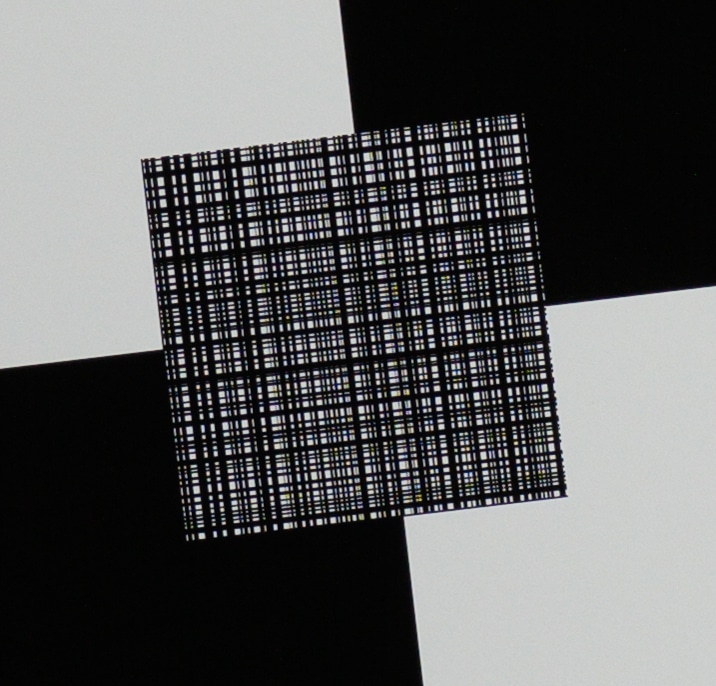
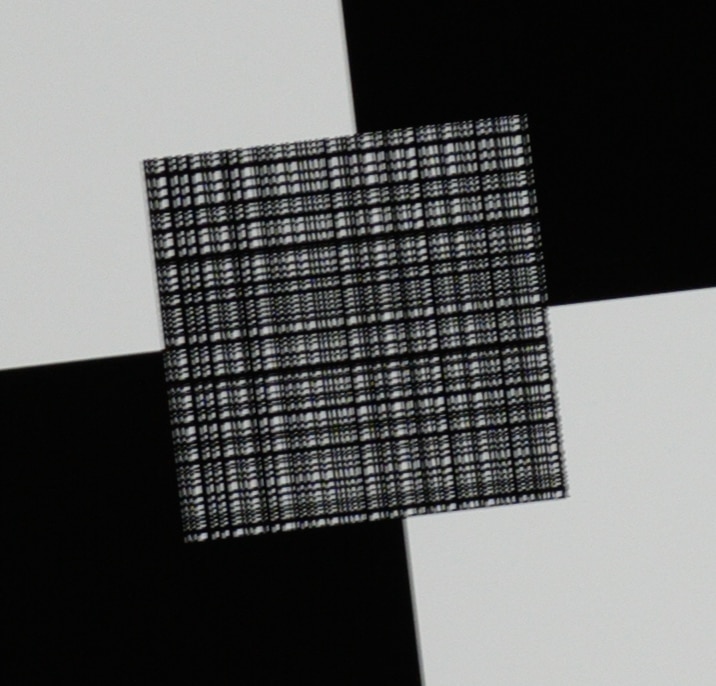
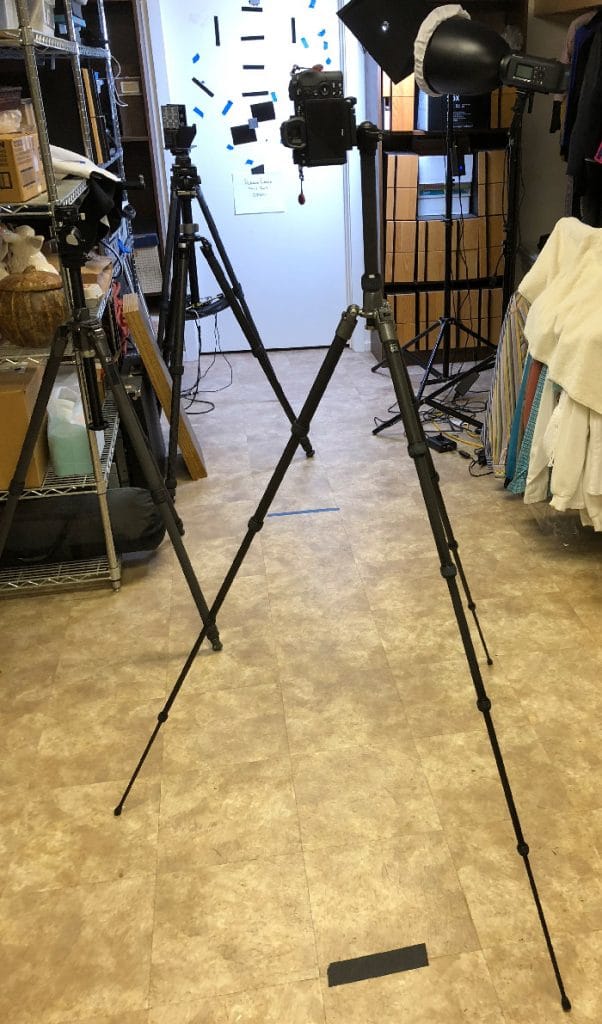
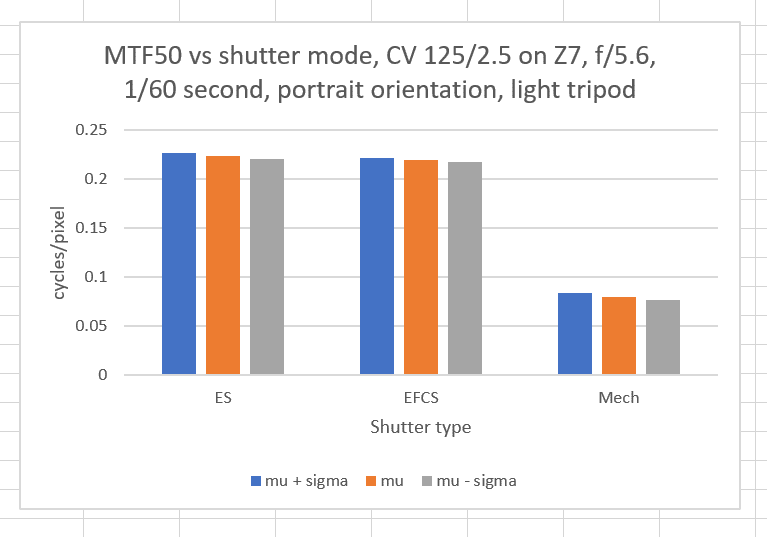
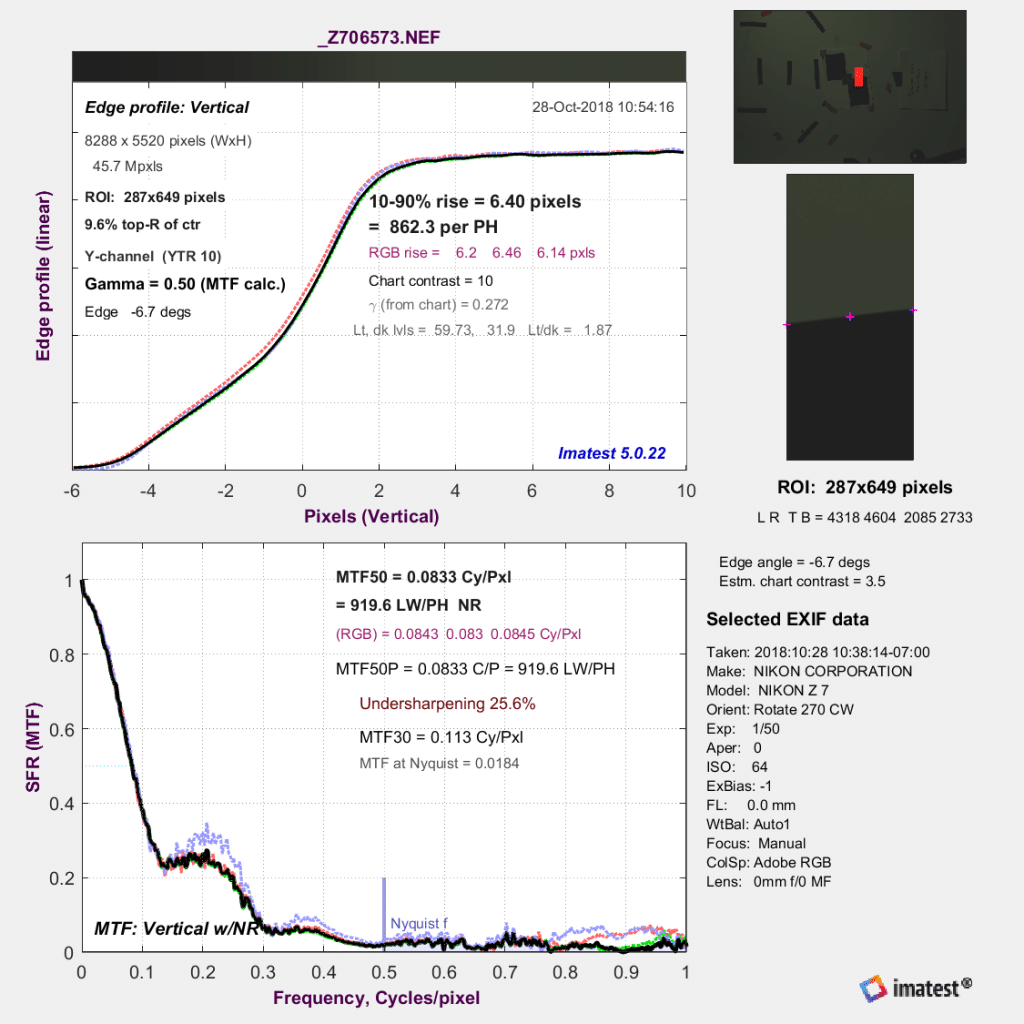
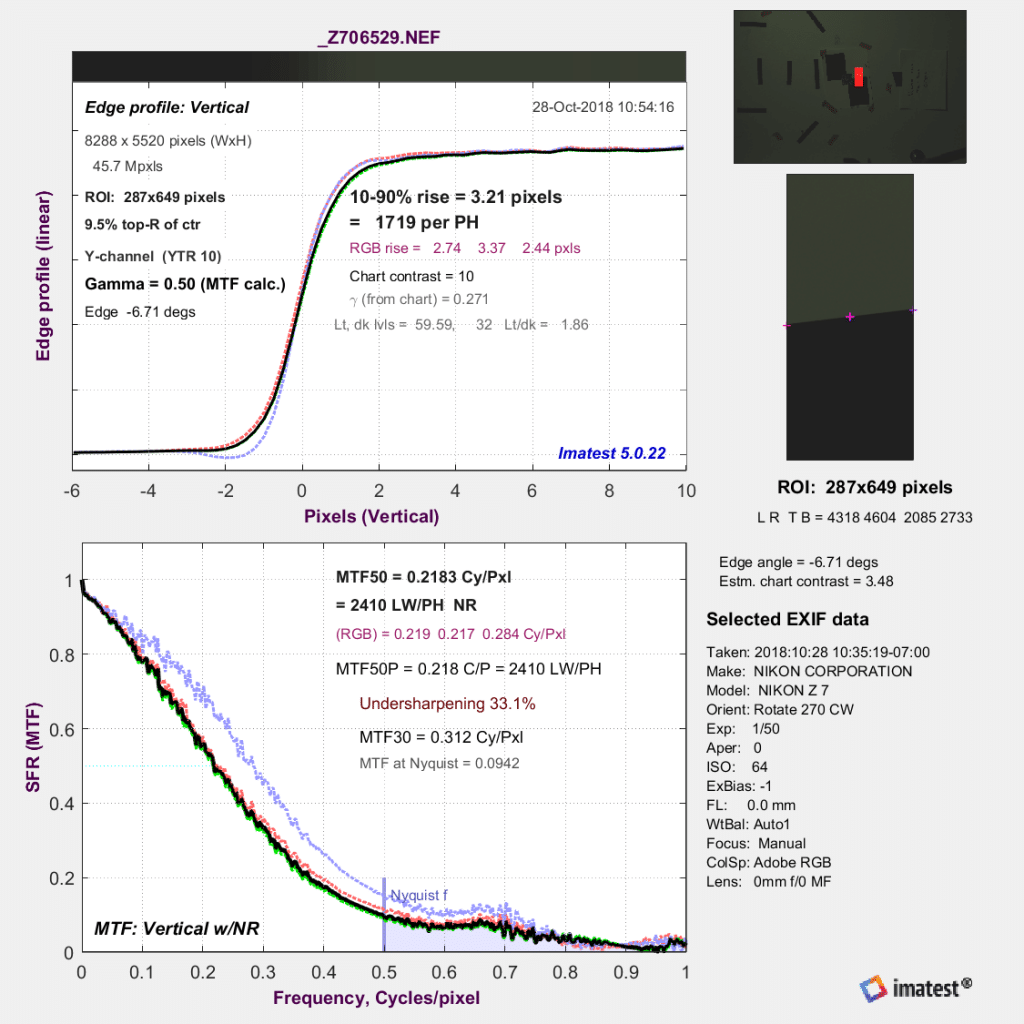
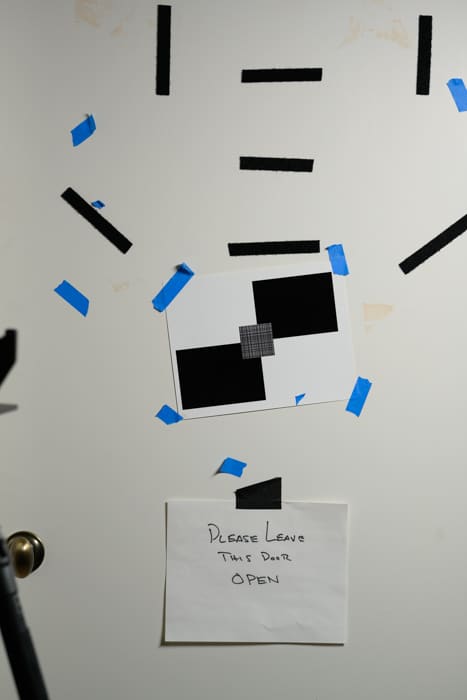
> Sony added electronic first curtain shutter to the a7RII and subsequent cameras
For clarity:
Actually EFCS was already in A7 (mark I) which was released on the same day as A7R (mark I)… So Sony was pretty aware about the issue.
A7R (mark I) was the only FF dSLM from Sony w/o EFCS…
Yeah, Sony put EFCS in the FF MILC that needed it the least. And Sony provided zero advice about the implications of shutter shock on the a7R, and, AFAIK, never admitted it existed. I don’t give them a pass on this.
Sony’s imaging sensor division pushed for resolution before the readout tech caught up on the 36MP sensor, and shutter shock was the unfortunate consequence. The Sony a99 mark 1 (released a year before either of the a7 cameras) had EFCS, as did the majority of NEX and A-mount SLT APS-C bodies before FF MILC was even a thing. It was less for shutter shock and more for responsiveness in higher frame rate shooting, but the reduction in shock was a benefit. The lack of EFCS on the 36MP sensor was the outlier, not the norm. Don’t forget that the D800, which used the same sensor, suffered similar shutter shock issues even when using MLU, and that was only fixed/acknowledged in the D810 which added EFCS on a new revision of that sensor.
That doesn’t absolve Sony from criticism from the shock issues, which were well-deserved at the time. I’m sure the complaints about shutter shock factored into the quick release of the a7Rii (amongst other things). But we’d already been used to years of MILCs and SLTs with EFCS, so it wasn’t a new concept.
Unrelated, but the blue channel MTF being higher and notably shaped differently, plus the negative values in the ESF say something about… something. Probably where the PDAF pixels are (that they are in the blue part of the matrix).
Fantastic article. I’m really surprised about these results, especially for a camera this expensive. Have you done the same test with the Fujifilm X-H1? It is said to have one of the best shutter shock absorption mechanism, here is an article on it. https://fujifilm-x.com/global/stories/x-h1-development-story-2/
I have not.
Is there any definition why it happens? Is it due to IBIS shaking from mechanical shutter?
IBIS was off.
It is caused by the vibrations that happen when the shutter moves inside the camera. This does not happen when the electronic shutter is used (nothing moving inside the camera).
Some cameras (some Nikons, Fuji X-H1) handle shutter shock very well (no discernable difference between mechanical and electronic shutter) and others like the z7 apparently do not handle it well. Surprising for a camera this expensive.
I know of no Nikon DSLR that is free from first-curtain mechanical shutter effects. However, with MILCs, more has to happen before the first curtain can open than with an SLR with the mirror locked up. I have not found a single MILC with EFCS that isn’t markedly better at some shutter speeds and lens focal lengths with that EFCS enabled than with it not.
Hi Jim;
So, if I interpret this correctly, for normal, hand-held shooting below 1/2000 sec. I should set the camera to EFCS (mechanical shutter=off), correct? Can I also enable IBIS without risk of shutter shock artifacts?
I simply want to get the best results for general shooting hand-held with my Z7.
Thanks!
-Brad
Correct on both. There are places where you’ll want to use fully-mechanical shutter, but they are few and far between.
Just wanted to say thanks for spending the time doing this…plus all the other articles related to this topic. Very very informative and helpful!
Thank you for posting this. I was going to return the camera because of the shake, but now it’s becoming my favorite camera ever. I shoot commerical product and lifestyle as well as video on the Z7. Thanks again!
I have definitely seen this effect in the field. Disappointing but at least there is a solution. I had heard of this before and verified with some simple tests at home. Weeks later I was shooting at the Museum iif Flight in Seattle and decided to check my results a few. Minutes into the visit. I was horrified at the results and then remembered to switch to Electronic First Curtain Shutter. I reshot the earlier photos with considerably better results.
Jim,
For a landscape photographer that is taking a 30 second exposure, what are your thoughts on EFCS and whether it should be used? There are some shots that may be taken wide open to get a nice bokeh effect beyond what is being focused on, so I wonder if EFCS being turned on would be a bad idea.
Regards,
Michael
Except with really long lenses, at a 30 second exposure I don’t think you’ll see a material difference between EFCS on and EFCS off.
Hi jimk,
Although this is an old article I will give you my comment.
According to my own experience you are absolutely right. Now using the EFCS I will keep the Z7.
Was out taking pictures with my new z7 an 24-70 f4, was not impressed with sharpness when magnifying 100% . I was quite disappointed with the result, did some additional very simple tests, handheld artificial light indoor. With or without IBIS (best with IBIS), then I tried EFCS, what a difference. I used the camera as I would normally use it, and the improvement in sharpness when using EFCS is significant
The good news is that mechanical shutter kills aliasing!
No OLPF on your 24MP FF camera? Use mechanical shutter!
It’s an ill wind that blows no good.